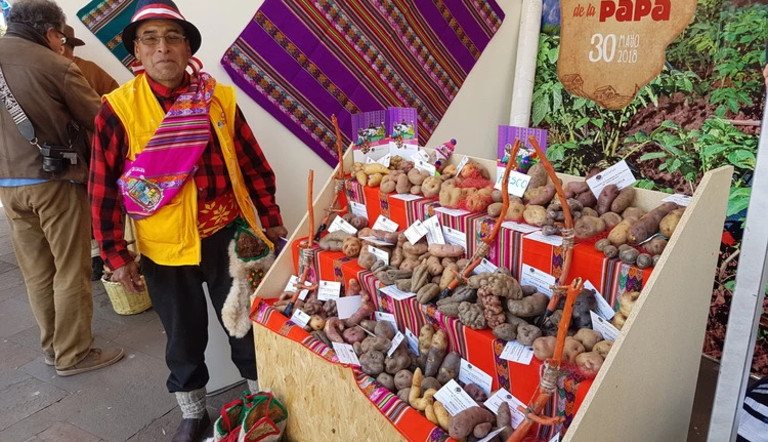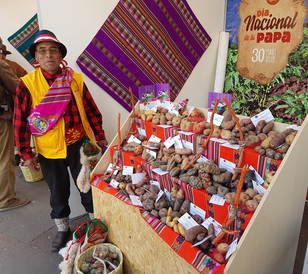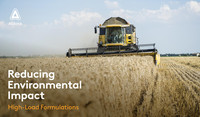
Potato goes back to the future in Peru

Recently potato devotees made a pilgrimage back to the Andes to take part in the World Potato Congress in Cusco, Peru. There for 10,000 years, long before the Inkas, Spanish or millions of tourists visited the area, people have been planting tubers first discovered by their ancestors. There is a reverence for the crop that has fed their families and become entwined with the country’s identity.
The World Potato Congress certainly paid homage to the potato’s place in the culture of Peru, with both the President and Vice President of the country joining 1,000 delegates from more than 50 countries for the event’s opening ceremony. But the event was certainly not stuck in the past, with a focus on the potato’s role on a feeding a growing world population more healthily with less impact on the environment.
As the world’s fourth most important crop, the potato is an important source of nutrition across the world, but it has not made the same yield gains as other crops such as corn (maize) and wheat. Scientists at the congress explained that the complex genetic make-up of the potato is one reason why the crop has not made the same gains as others, but that could be about to change with the arrival of a new generation of diploid potatoes, which are easier to breed and deliver increasing yields and quality.
Tackling nutrition & climate change
Since the potato spread across the world it has been used to feed people affordably, with the Chinese and Indian Governments developing targets that could see the doubling of potato production in the countries. The potato is also attracting attention as a crop that has a lower water and carbon footprint than alternatives such as wheat and rice that can be grown in more marginal environments such as the mountains where it first originated. Peru is also the headquarters of the International Potato Centre (CIP) and it is focusing on developing varieties that can cope with high temperatures, drought and salty soils at its 20 sub-centres in South America, Africa and Asia.
Although the greatest potential for the potato might be in developing countries, it still plays an important role in developed markets, despite consumption slipping in the face of competition from foods such as pasta and rice. Many European and North American visitors to the congress were seeking information on how potatoes can be used to improve nutrition. One project presented at the event is looking at how anthocyanin, which make many native potatoes purple, can help tackle colon cancer, while there was plenty of evidence that the slow release of potato energy could help control obesity. One US research paper found that the many thousands of tonnes of potato peel that are discarded every year could have a significant role in regulating food intake because of the minerals it contains.
A campaign launched at the congress by CIP is asking people around the world to ‘Imagine a World Without Potatoes.’ The provocative campaign is designed to get people to value the crop more and explore its potential. More details can be found at: www.aworldwithoutpotatoes.com



